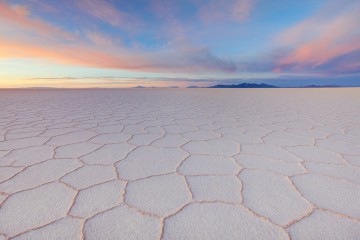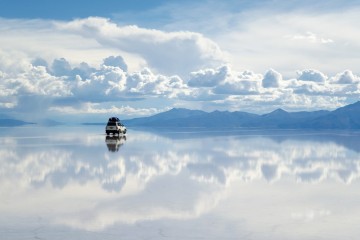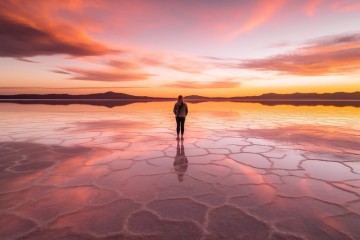Viva’s General Manager, Tara Sutherland, shares her experience exploring Bolivia on a privately guided tour.
When my partner and I began planning our South American journey, Bolivia was the one destination right at the top of my (admittedly long) must-see list. I’d been dreaming of visiting those magical salt flats for years, and this time I was determined not to miss out.
This is the story of our four-night journey across the Uyuni Salt Flats and into the Bolivian Altiplano, a remote and desolate corner of South America where flamingos feed in red lagoons, volcanoes rise from endless plains, and small communities thrive in conditions that seem impossible. Along the way, I picked up a few lessons worth sharing for anyone planning their own Bolivia tour.
Enjoy the ride.
Click the links to discover this unforgettable journey.
Across Salar de Uyuni
Into the High Altiplano
What’s it Like to Travel at the Top of the World
Travel Bolivia – The FAQs
When to Visit the Salar de Uyuni
What Will I See?
Can I Visit Salar de Uyuni for ONE Day?
Where to Stay
How to Get There
About the Guides & Our Itinerary
Across Salar de Uyuni
We reached Uyuni by road from Potosí, a long but spectacular drive that cut across the high Andean plains. The air grew colder as we neared, and herds of llamas grazed near tiny adobe villages scattered across the golden landscape. We met our guide and driver, and the 4WD that would become our home on wheels for the days ahead. After some sightseeing and stocking up on coca leaves (to help with potential altitude headaches), we set off for the main event.
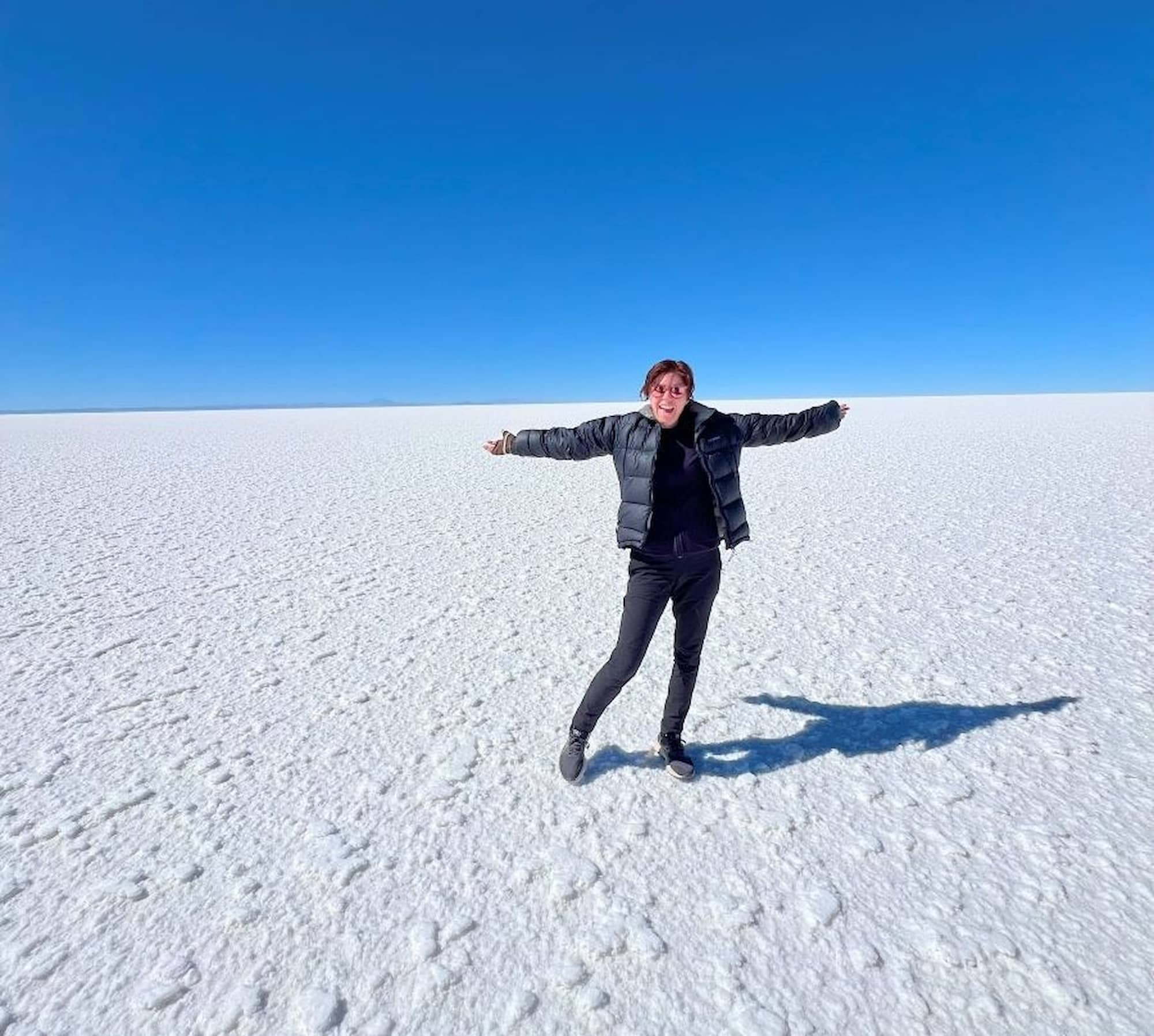
Had to pinch myself...I’m HERE!
> Read our guide to avoiding altitude sickness.
The Bolivia Salt Flats might be one of the most photographed places on earth, but nothing prepares you for standing there in person. The ground stretched white in every direction, cracked into neat hexagons that looked as though someone had carved them by hand. What struck us most was the silence. It was the kind that rings in your ears, the kind that makes you realise how much noise fills everyday life.
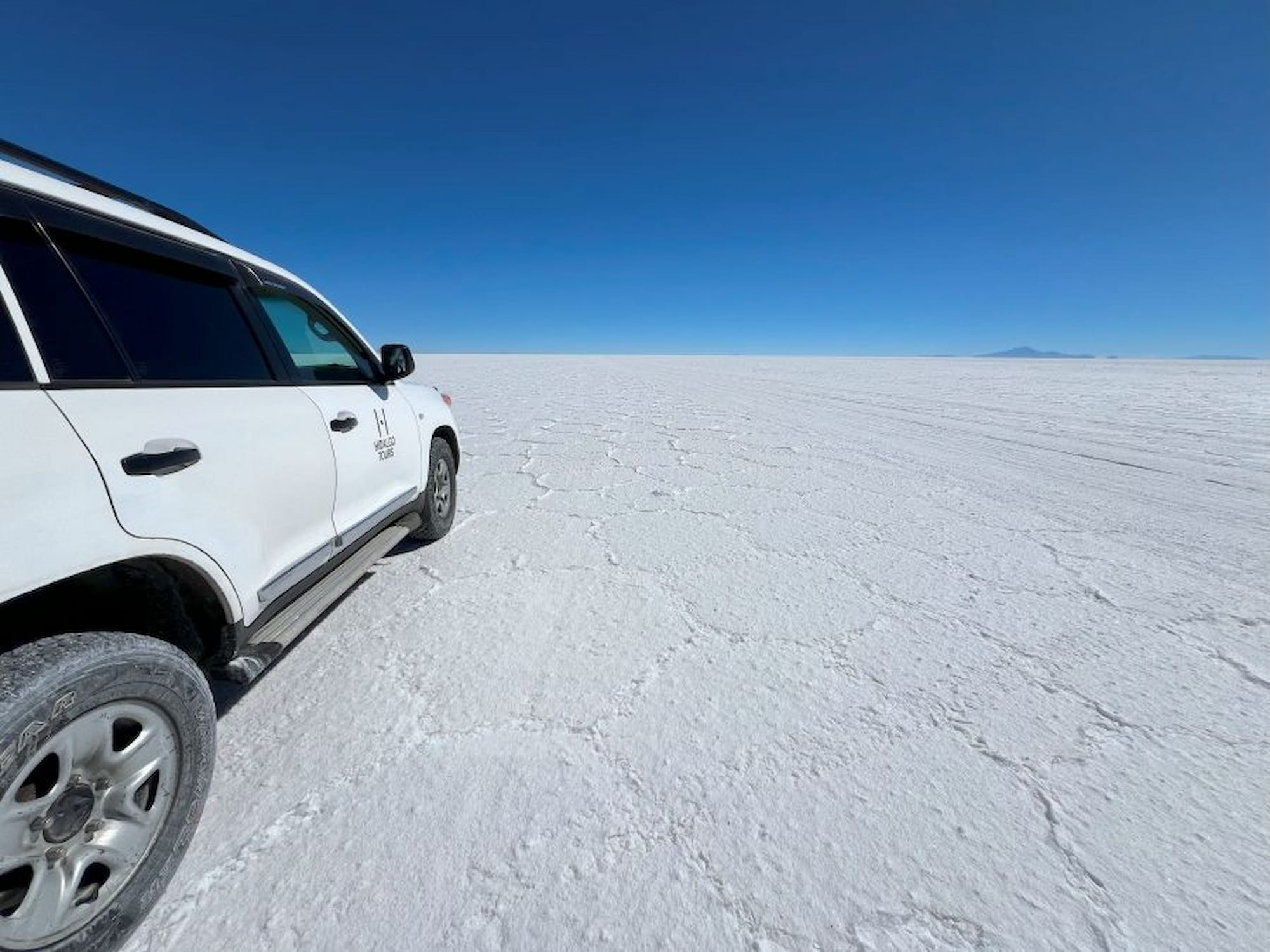
The eye-popping expanse and silence of Salar de Uyuni are something else.
After some debate and considering other places we wanted to see, we settled on visiting during the dry season. It meant we could drive across the flats and reach the outer islands that are normally cut off when the rains arrive. We got super lucky though, and ended up with the best of both worlds – the dry, cracked salar, plus a touch of “flooded” salt flats, as our driver knew a small section that had recently flooded after a short burst of rain. He took us there, and for a magical time, the sky was mirrored perfectly beneath our feet.
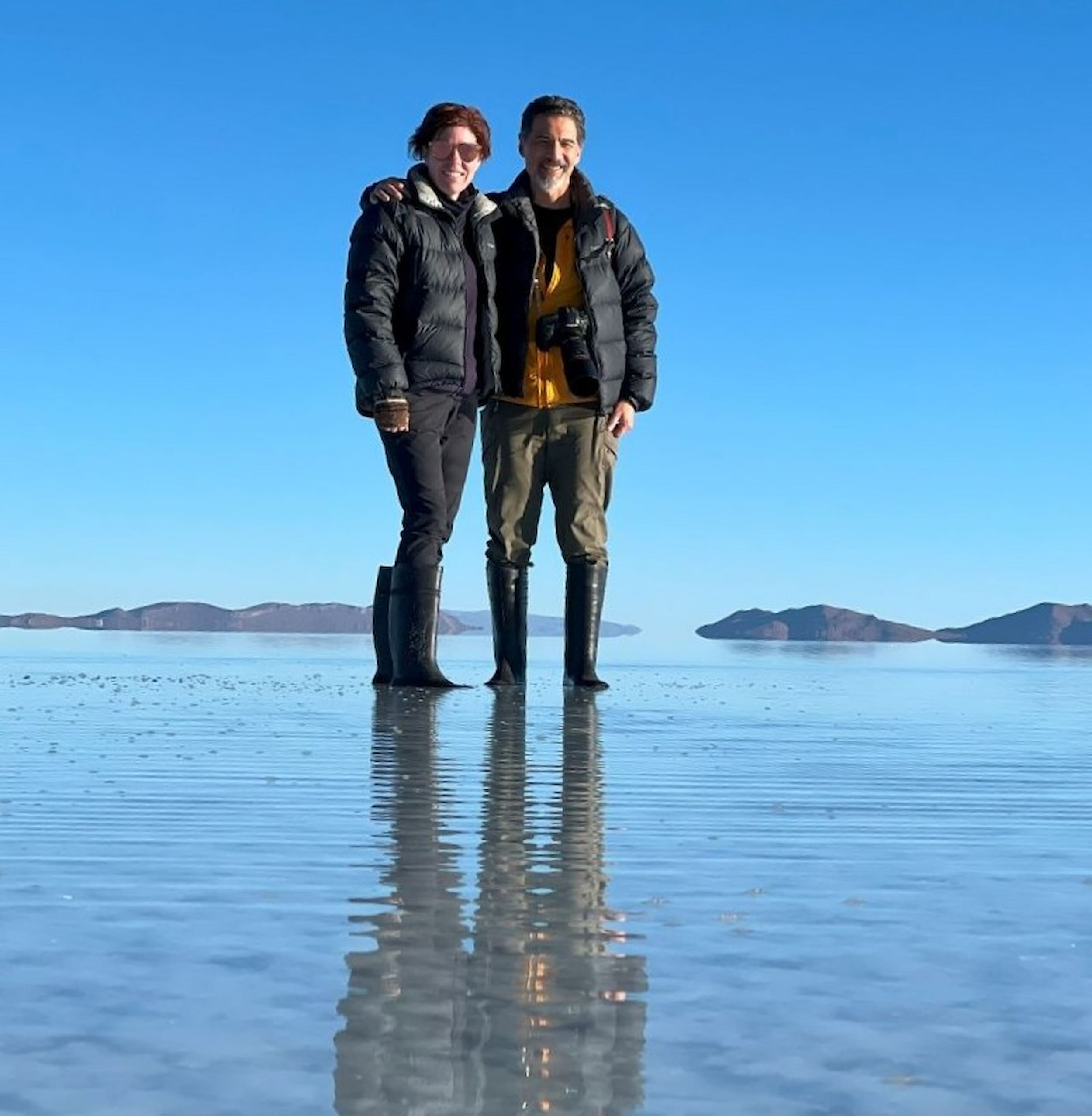
Finding a flooded patch amid the dry expanse felt like experiencing both seasons at once.
Incahuasi Island is a spectacular highlight, because it appears out of the flatness like some kind of oasis. It's a rocky rise covered in towering cacti and alive with darting viscachas. From the top, volcanoes floated on the horizon, their reflections faint against the pale salt. Our guide told us that beneath this crust lies one of the largest lithium deposits on earth.
We spend the rest of the afternoon driving across the Salar, exploring, from a visit a local salt processing plant, visiting the well-known flags monument, enjoying a typical Andean picnic lunch, right in the middle of the salt flats, and taking lots and lots of photos!
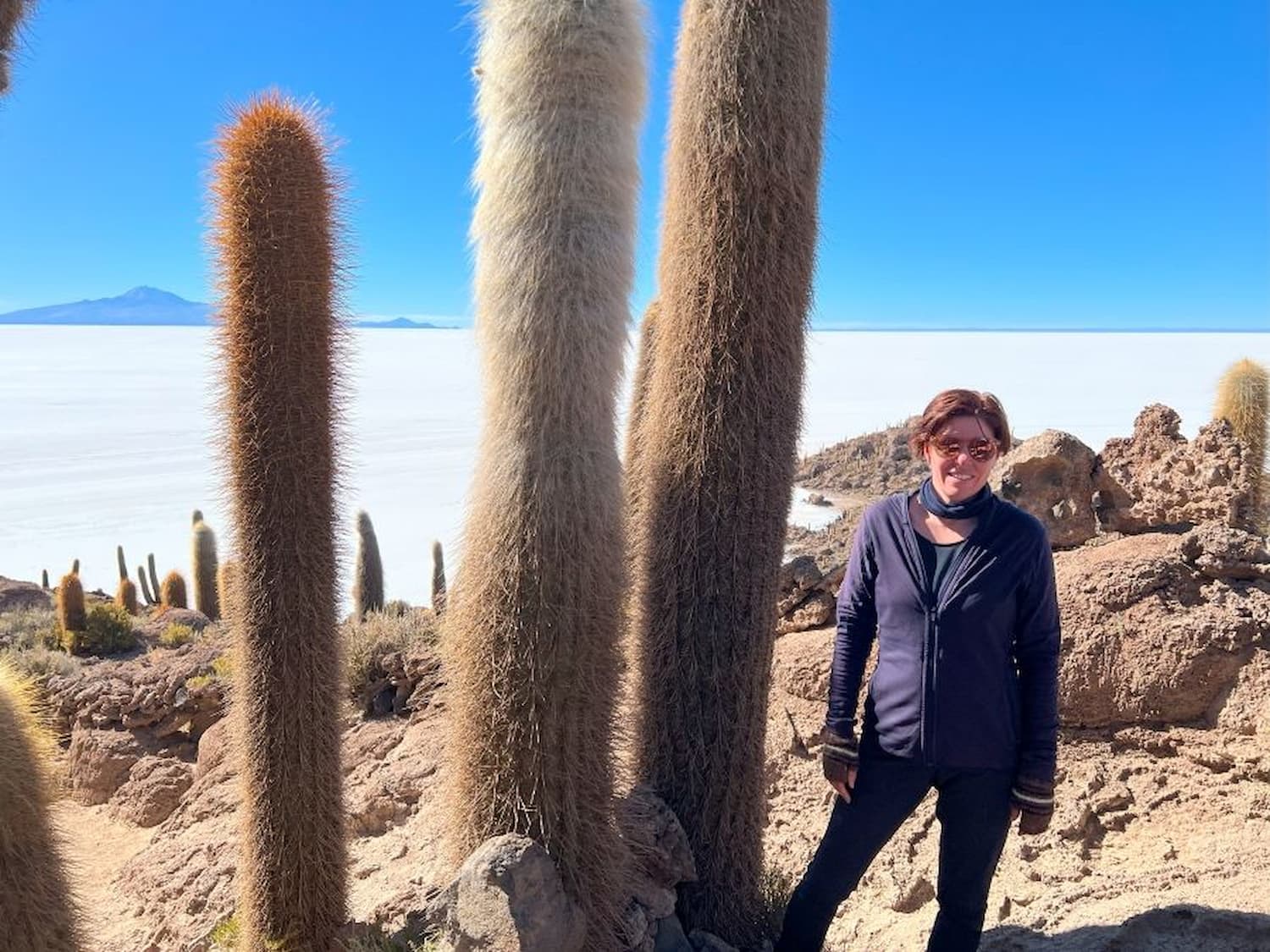
NOT an optical illusion: the Incahuasi cacti are seriously tall!
As the afternoon light softened, the salt turned golden and shadows stretched for miles. Our driver set out a small table and poured us a glass of wine. We sat in silence, watching the sun melt into the horizon, knowing this was a sundowner we would not forget in a hurry.
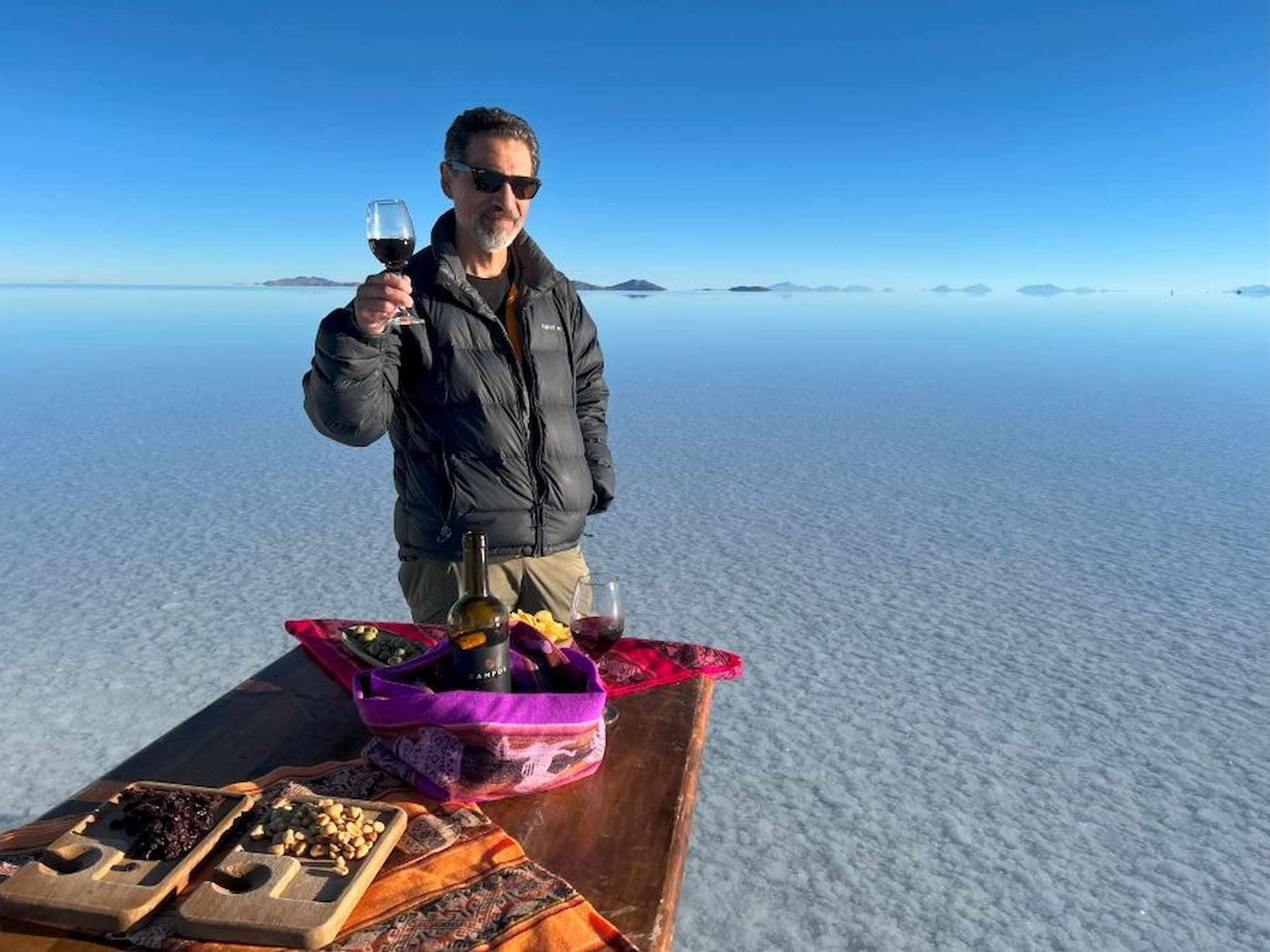
Wine in hand, sunset on the flats.
After the unique experience of sleeping in a hotel made entirely of salt, we spent another day out exploring this wonderful environment. Driving all the way across the salt flat was mesmerizing, the immense expanse of white! Arriving at the foothills of Thunupa Volcano, we visited local communities to learn about life on the shores of the salt flat, and the ancient Incan inhabitants of this region.
Into the High Altiplano
Leaving the salt flats behind, the road began to climb, and the scenery changed fast. The Altiplano opened around us, a vast highland of volcanoes, mineral plains, and colourful lagoons that seemed to shift with every turn.
We stopped at Laguna Hedionda, where hundreds of flamingos fed in the shallow water. Their reflections shimmered in the morning sun as they dipped and waded through the shallows. Our guide explained that three different species live here, each adapted to the thin air and salty water. Watching them framed by snow-capped peaks was almost unreal, as if we’d stepped into a painting.
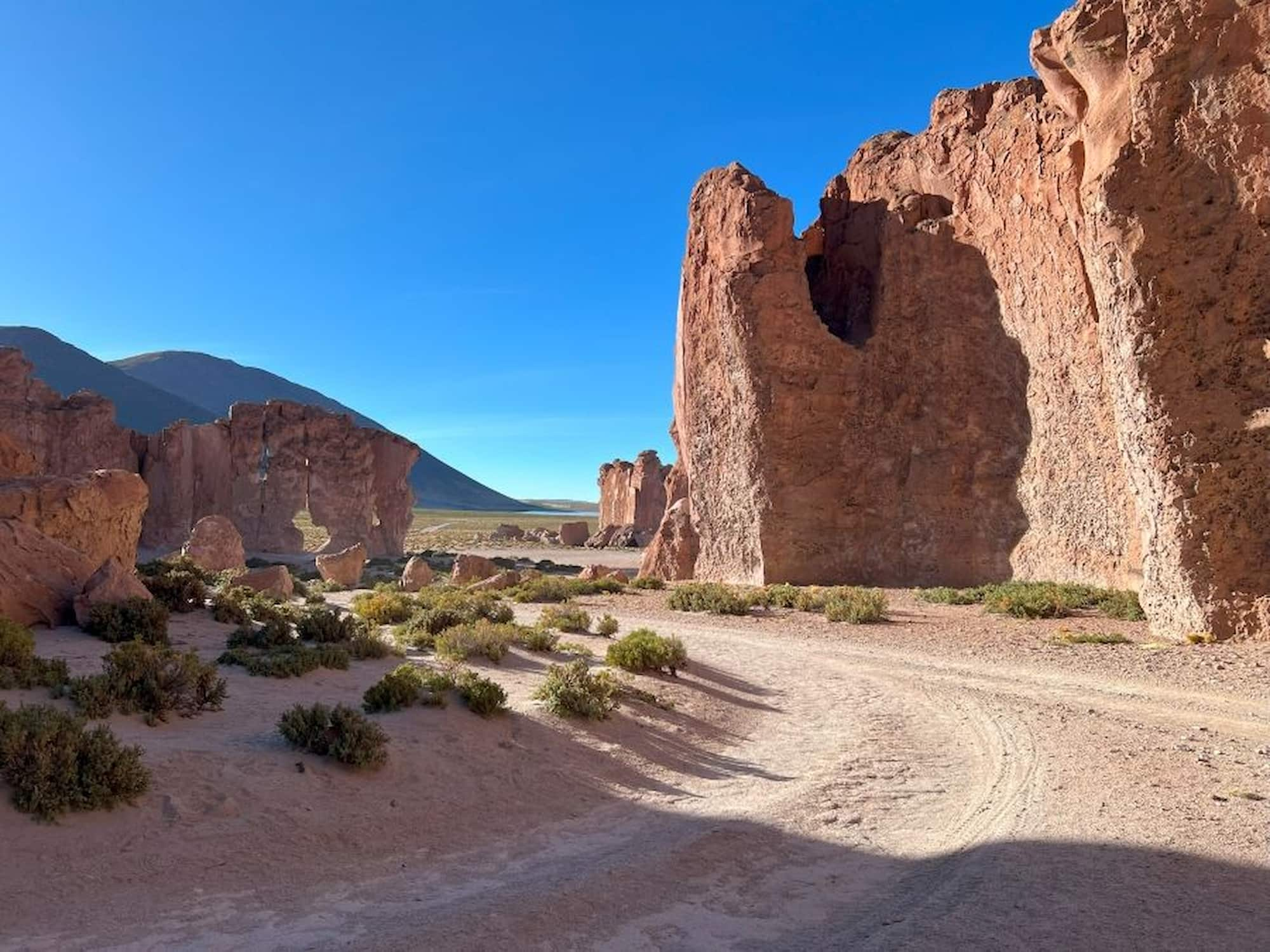
Unsurprisingly, Bolivia’s Altiplano is often dubbed the Salvador Dali Desert.
We crossed into the Eduardo Avaroa Andean Fauna National Reserve and saw steam rising from the ground, carrying the sharp smell of sulphur, and stopped by Laguna Colorada, where the water glows a deep red, dotted with white borax islands and streaks of pink where flamingos stirred the algae.
Around every bend, something new appeared, a herd of vicuñas grazing in the distance, a geyser puffing in the cold air, or a stretch of empty land that felt completely untouched by time.
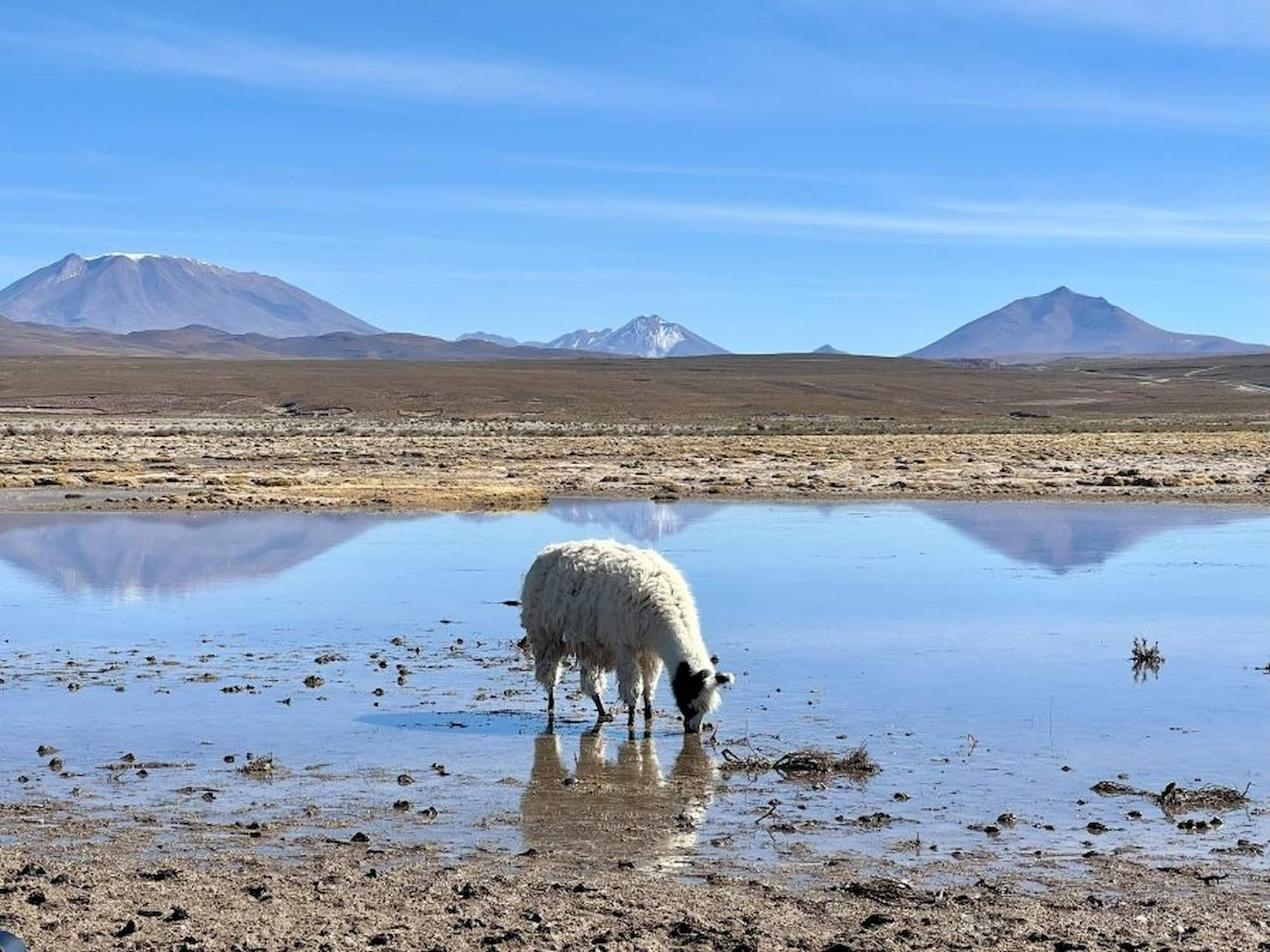
Only the hardiest animals and humans can carve a living on the Altiplano.
What’s it Like to Travel at the Top of the World
The nights are always frosty up here, but the warmth of the people who looked after us, and the lovely lodge we stayed in, made it easy to forget. We stayed in a small family-run place built into the side of a cave. The rooms were simple and cozy, and dinner was always hearty: quinoa soup, llama steak, or chicken (vegetarian options were not a problem either!) and endless cups of tea that really help with the altitude headaches.
One night, our hosts joined us for the meal and jovial chats, a mix of Spanish and English. Just before popping into bed, Marco and I stepped outside and looked up at the sky. This whole region is renowned as one of the best stargazing spots on earth. The Milky Way stretches across the entire horizon and feels close enough to touch. It's an astonishing spectacle, and now I understand why so many wax lyrical about the night sky here.
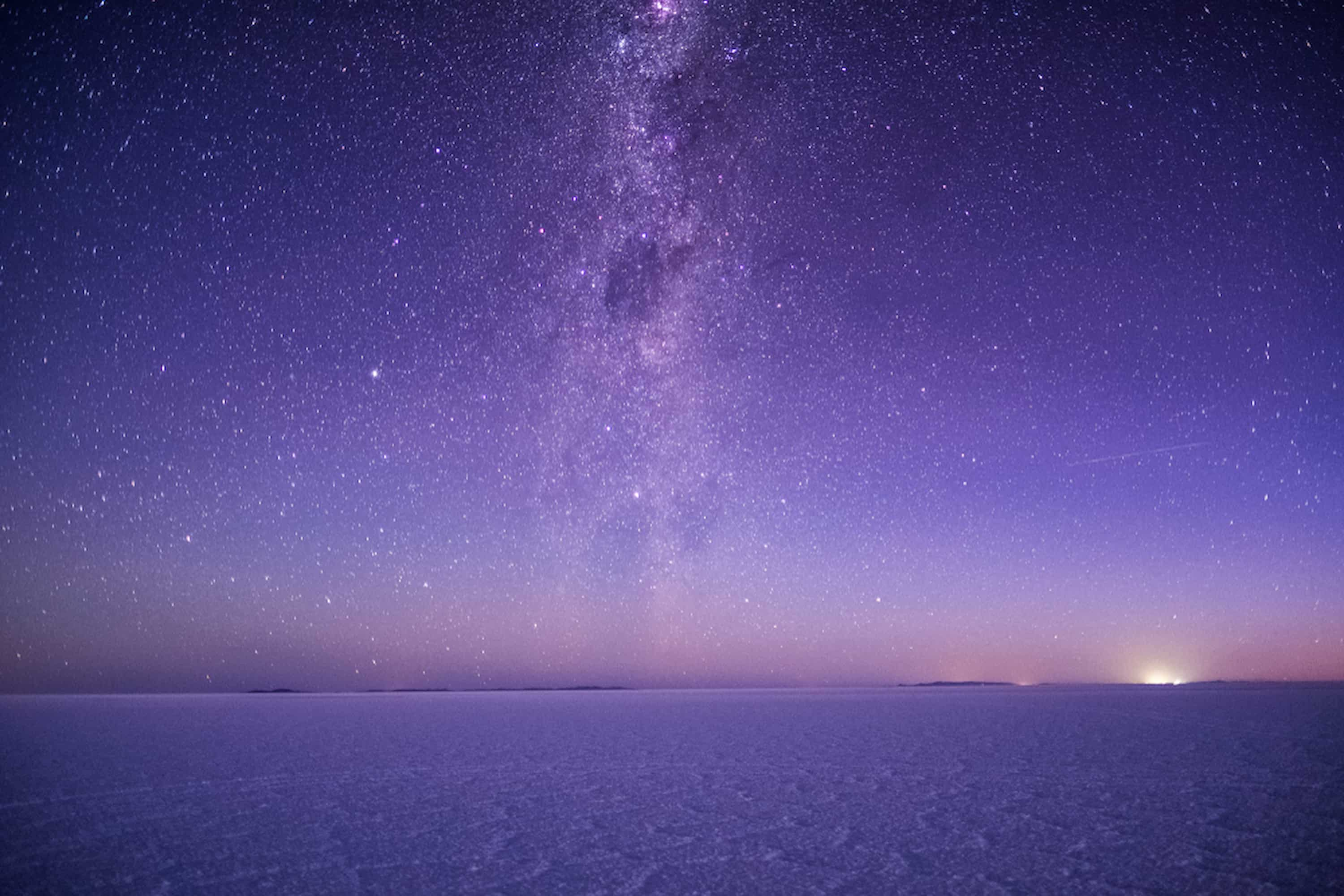
The night sky in the Altiplano is reason enough to visit.
The next morning, we had an incredible experience at one of the many frozen lagoons. We wandered along the shoreline, watching a mother flamingo with her chicks feeding in the boggy shallows (I learned that baby flamingos are grey!). Further out, across the frozen lake, a long line of sleeping flamingos stretched into the distance. We stood quietly as they began to wake and, stepping carefully across the ice, followed one another in search of an open patch of water to start their breakfast. It was a special moment I still remember with awe.
Travel Bolivia – The FAQs
After returning home, I realised how many small details had made the trip run so smoothly. The timing, the route, and even knowing what kind of lodge standard to expect all mattered. People often ask about the practical side of visiting Uyuni and the Salt Flats, so here are a few of the things I learned along the way.
When to Visit the Salar de Uyuni
There isn't one perfect time to visit the Salar de Uyuni; it really just depends on the experience you want.
From May to late October, the weather is dry and clear, which means you can drive across the flats and reach Incahuasi Island. Days are sunny, nights are very cold, and the visibility is outstanding. These months are ideal for exploring the Altiplano and covering more ground, which we personally wanted to do.
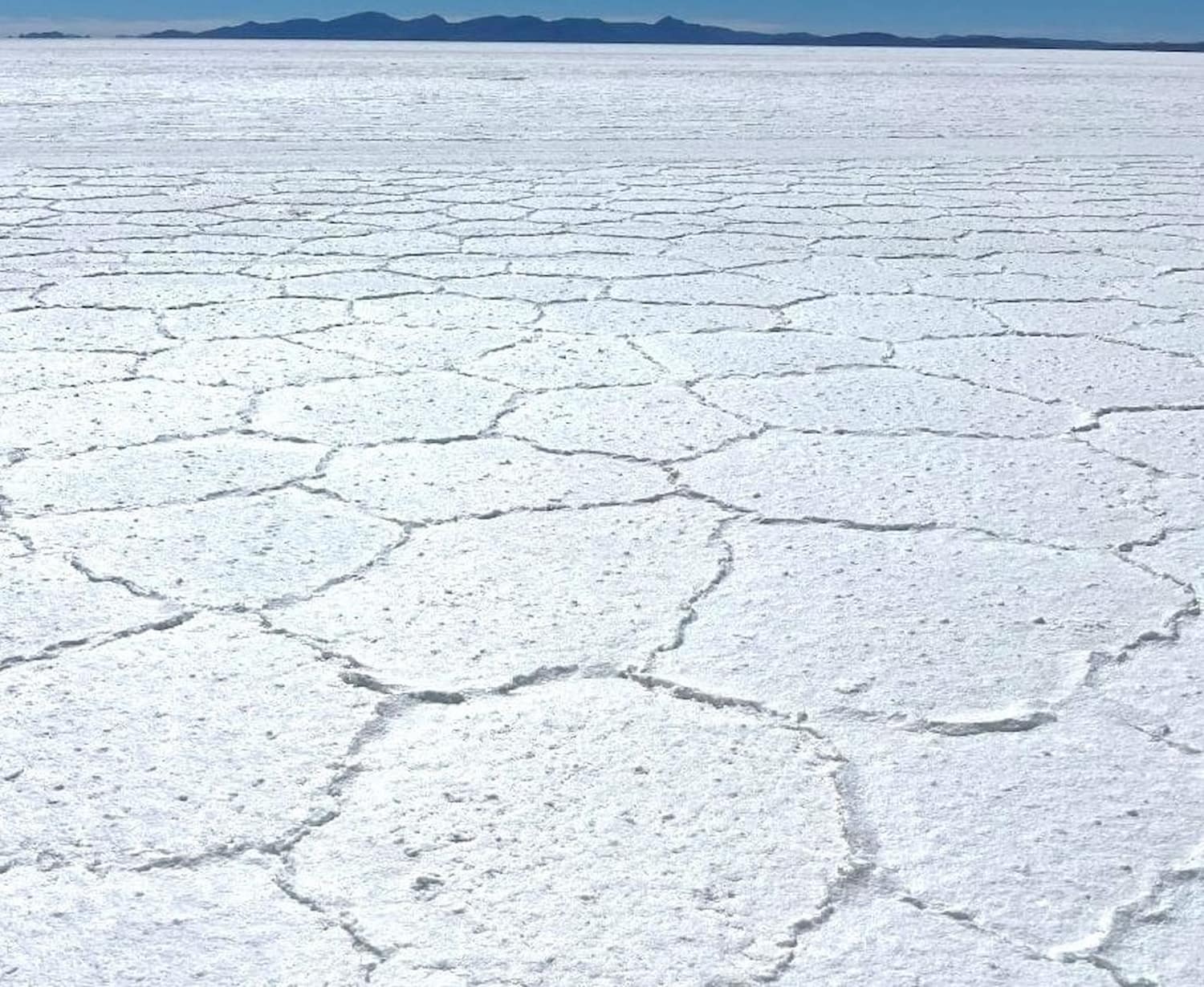
Dry season travels means seeing the minutest details on the salt flat’s surface.
Between December and late March, rains turn the flats into a mirror that reflects the sky. It is a jaw-dropping sight, but it can also be unpredictable since flooding sometimes closes parts of the Salt Flats. You can't explore as much, but what you see will surely be worthwhile, and the reflection photos, outstanding!
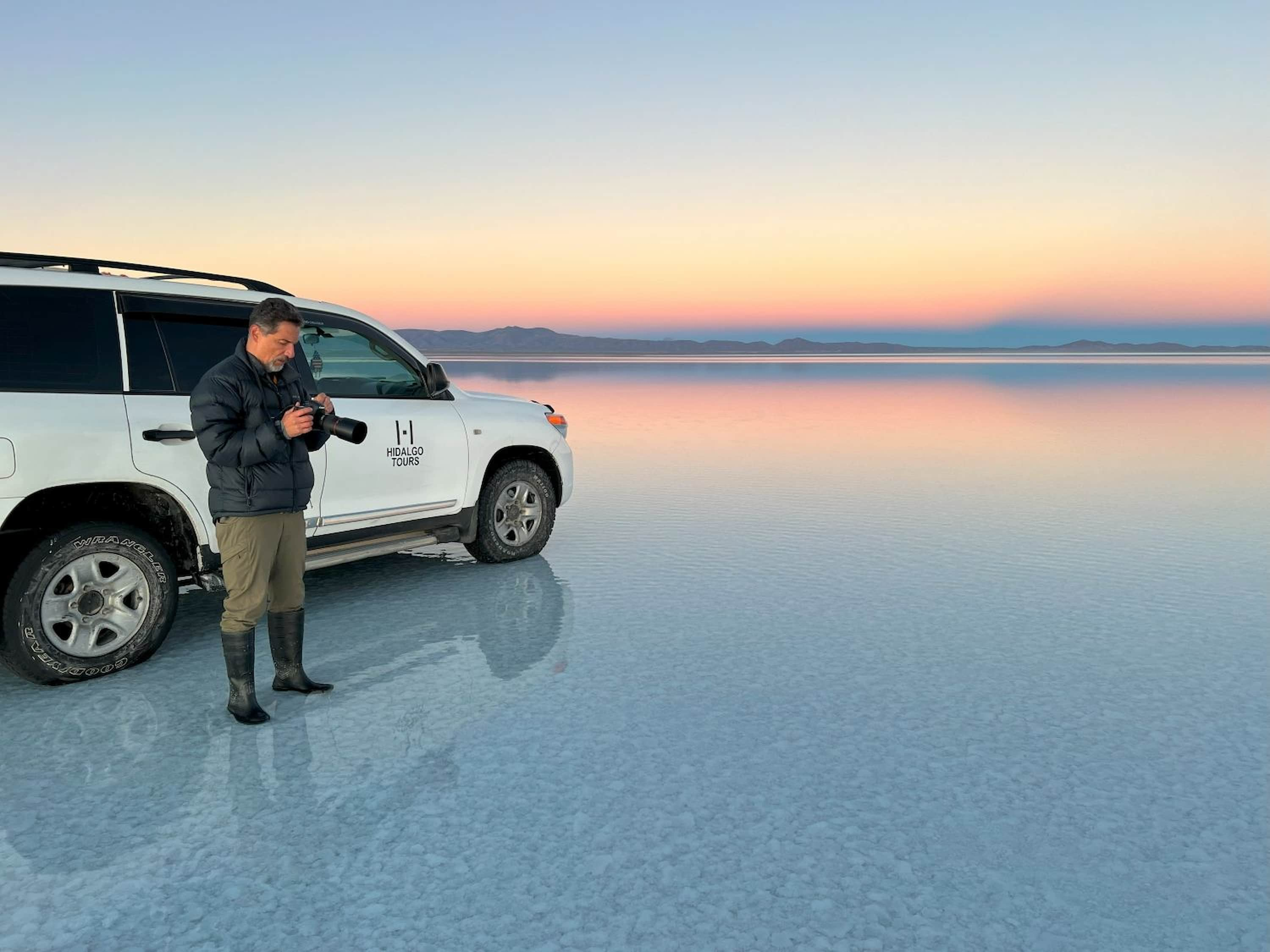
We were lucky enough to see the flooded effect even in dry season. And just a head’s up: Viva provides gum boots so you don’t have to worry about wet and crusty shoes.
Ultimately, though, Salar de Uyuni is simply magnificent no matter what time of year you visit. Go when you can, and it’ll blow you away!
What Will I See?
There's so much more to a Salar de Uyuni trip than salt, and I hope my trip report has highlighted the surprising diversity of things to see and experience here. A journey like ours showcases not just Bolivia's natural beauty but also its history culture.
Before you set off from Uyuni, enjoy an afternoon photo session at the eerie Uyuni Train Cemetery, a field of rusting locomotives dating back to peak mining days.
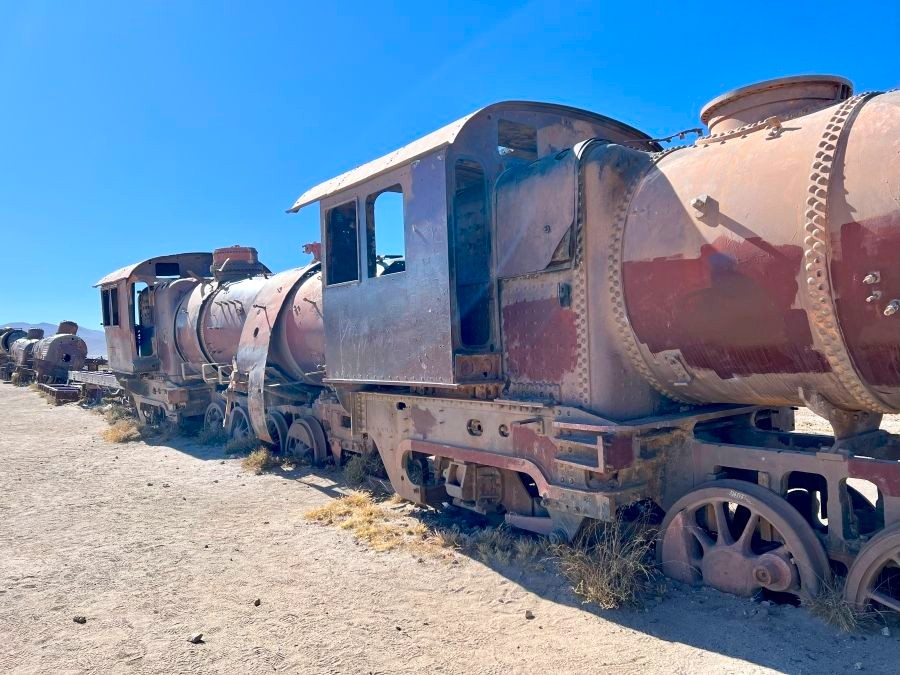
Uyuni Train Cemetery.
You can also include a visit to the Colchani salt mines to see how locals harvest salt by hand, scraping it into neat white mounds and drying it in the sun. There's something humbling about seeing that kind of work in such an otherworldly place.
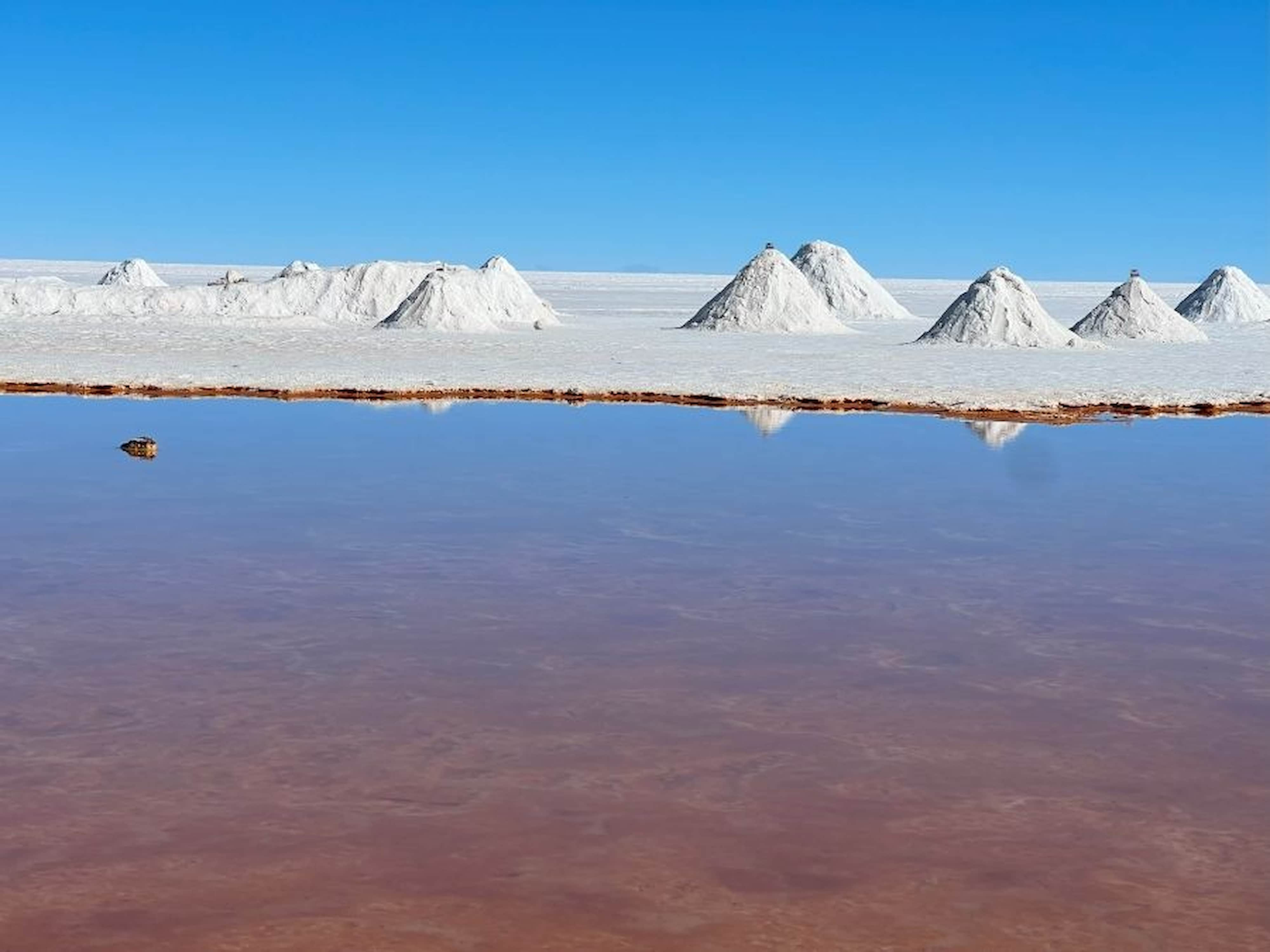
Witness how locals harvest salt by hand in Colchani salt mines.
Out on the flats, Incahuasi Island is a real treat, but it's the salt expanse itself that is the most captivating sight of all. Near Thunupa Volcano, we stopped by a small community that still farms on the edge of the Salar. Many of the stone walls surrounding their fields have stood since Inca times, it’s gob-smacking to think that people have managed to carve their living here for centuries.
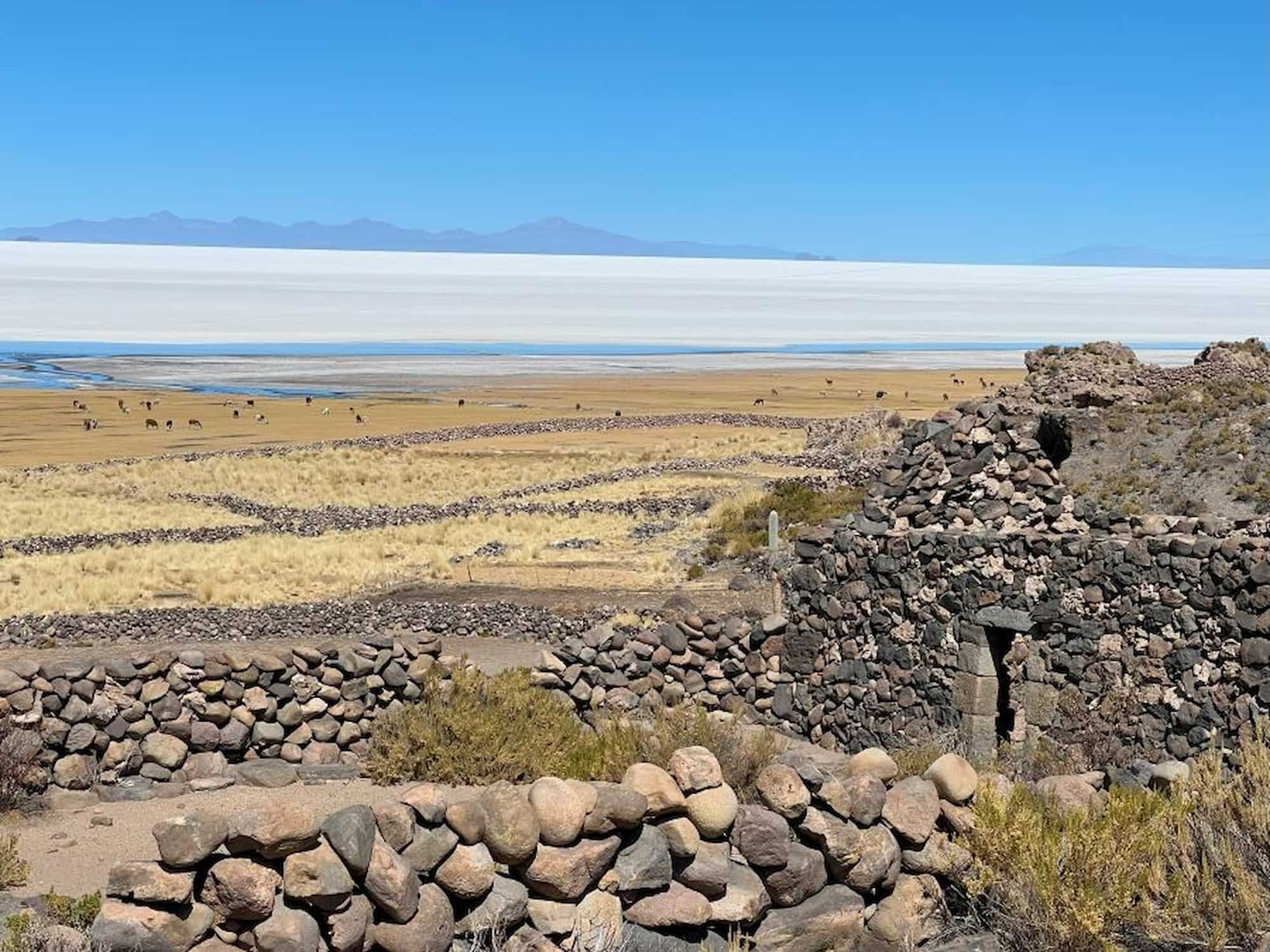
Inca-era walls still guarding the fields.
Further south is where the Altiplano turns wild and colourful, with red, green, and turquoise lagoons blanketed by flamingos, venting geysers, and herds of vicuñas grazing on the foothills of extinct volcanoes.
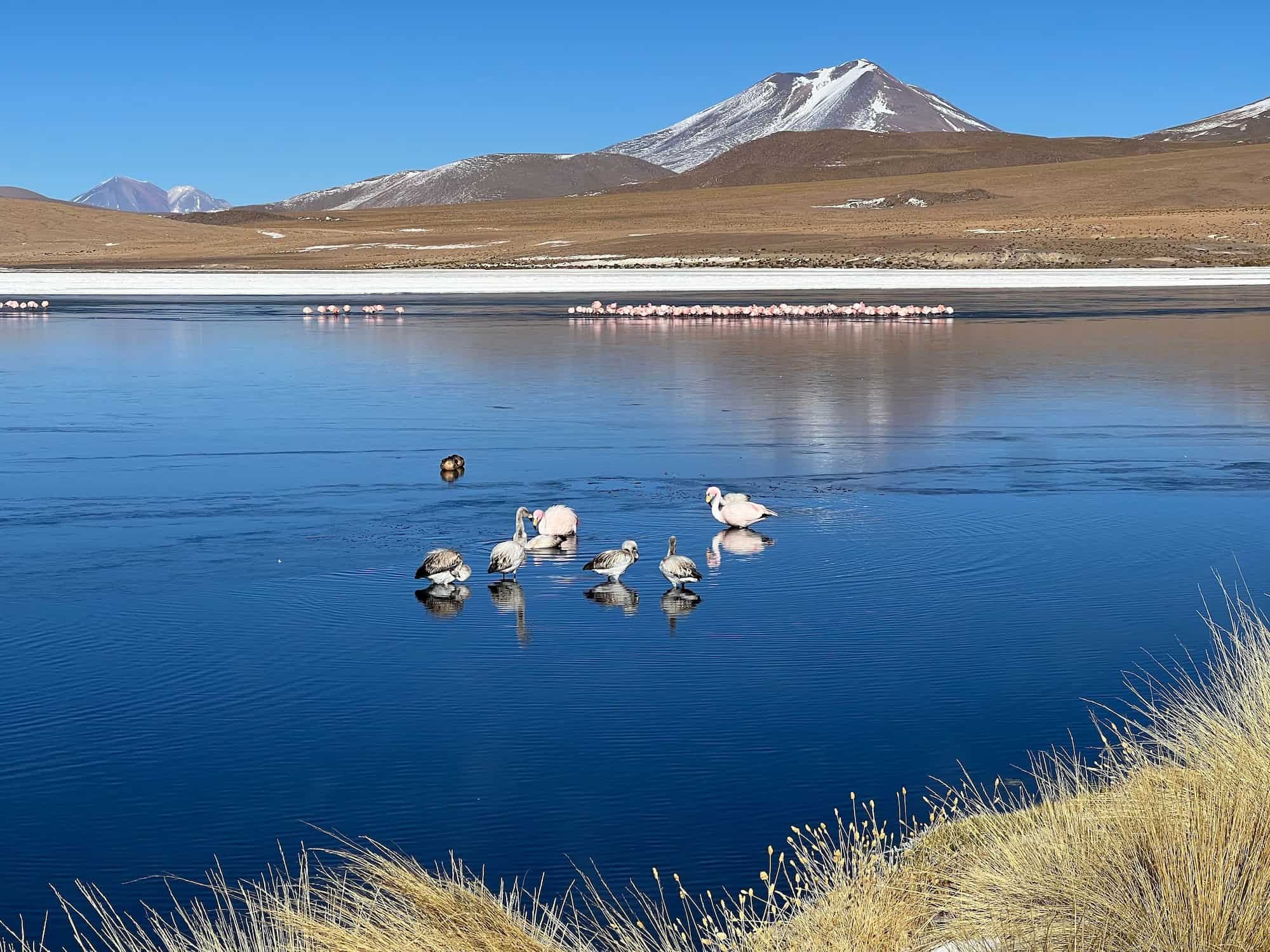
Wild and colorful: flamingos, geysers, and vicuñas by turquoise lagoon of Altiplano.
In one remote corner, we visited a small site where Inca mummies rest inside stone tombs, remarkably preserved by the immensely dry air. We left a small offering of coins and coca leaves, a gesture that locals say keeps their spirits at peace.
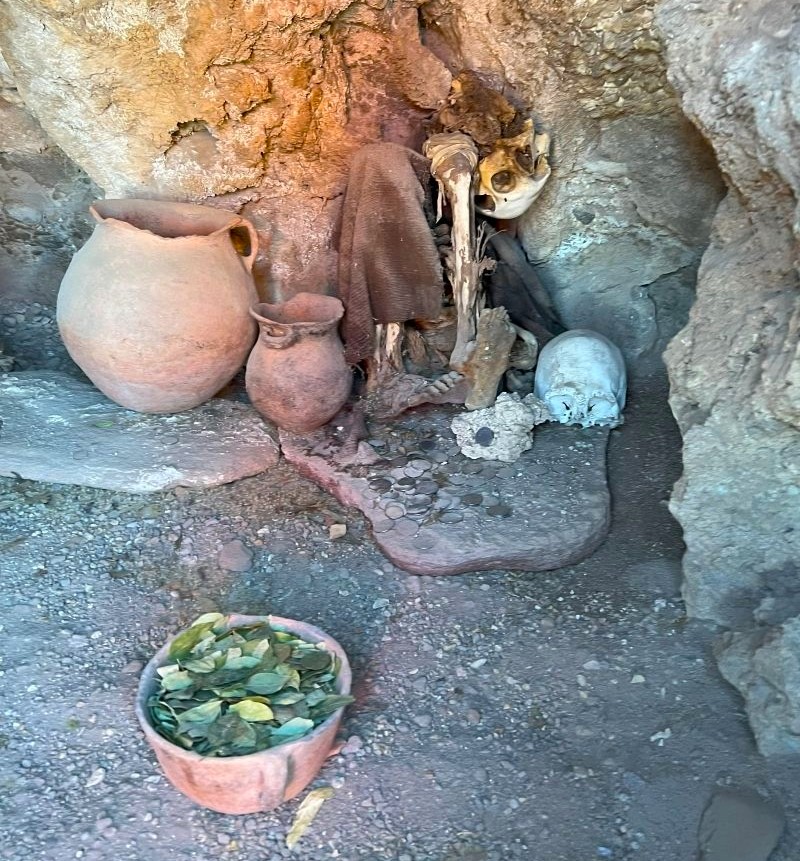
Inca mummies rest inside stone tombs.
So yes, you will be surprised at the astonishing mix of nature and history you can discover here.
Can I Visit Salar de Uyuni for ONE Day?
Alright, now here’s a request we actually field quite often here at Viva. The short answer is yes, you can, but the longer and better answer is “Don’t you dare!”
Just kidding, but not. You will likely have to travel far and wide to even get to Uyuni and the thought of barely experiencing the Salt Flats is too painful to recommend. Seriously, we recommend a 3-4 day journey across it, to do it (and yourself) justice. So that’s ideally 2 days for the Salt Flats and surrounds and 2 days for the Altiplano.
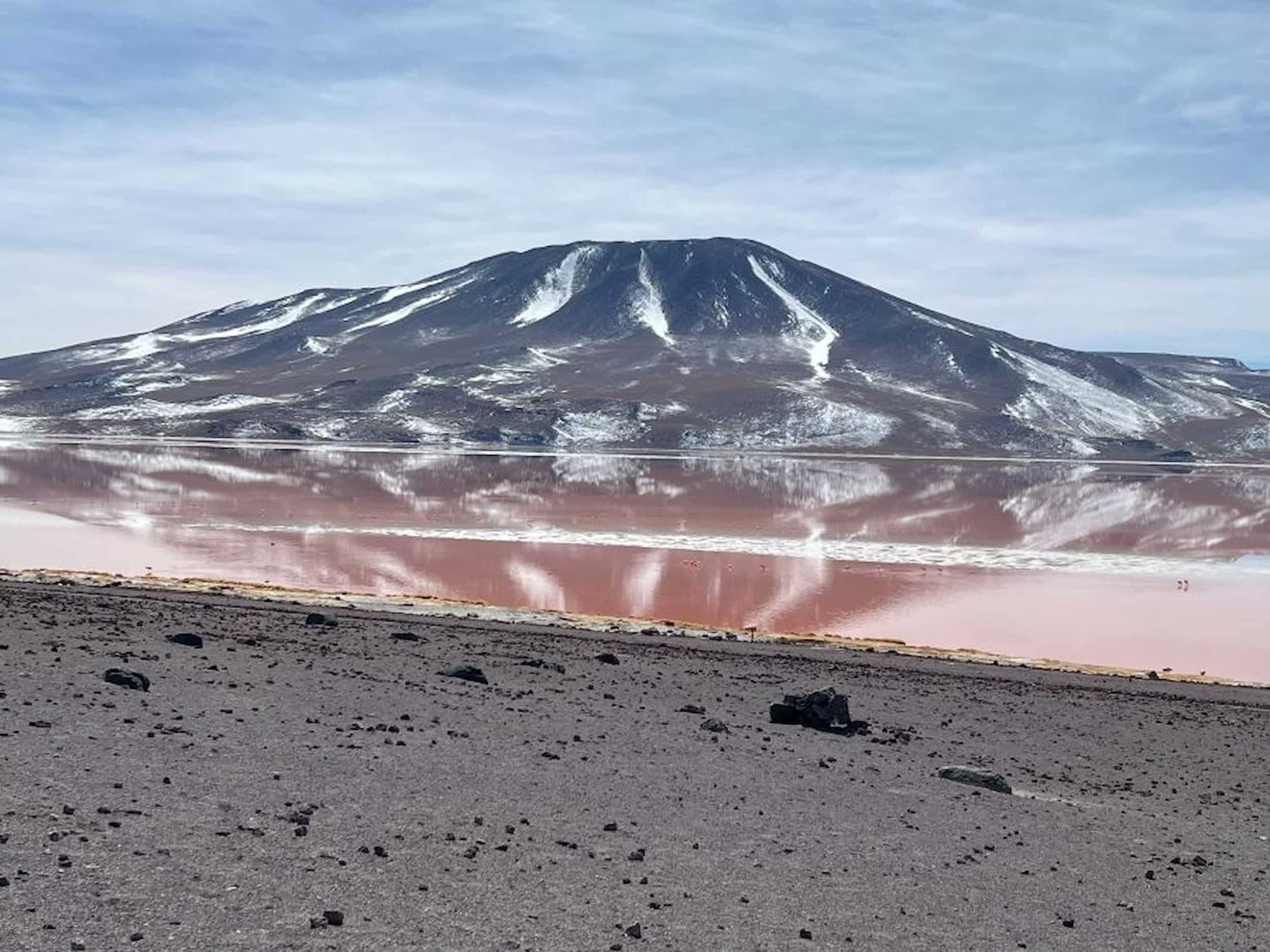
Laguna Colorada is a spectacle worth time and effort.
> See Viva’s Salar Uyuni Tours.
Where to Stay
Most accommodation around Uyuni sits on the edge of the salt flats, where the ground glitters white almost right up to your doorstep. Many hotels here are built from salt bricks, which sounds like a bit of a gimmick until you step inside. The air feels cool and dry, and the walls shimmer faintly when the light hits them.
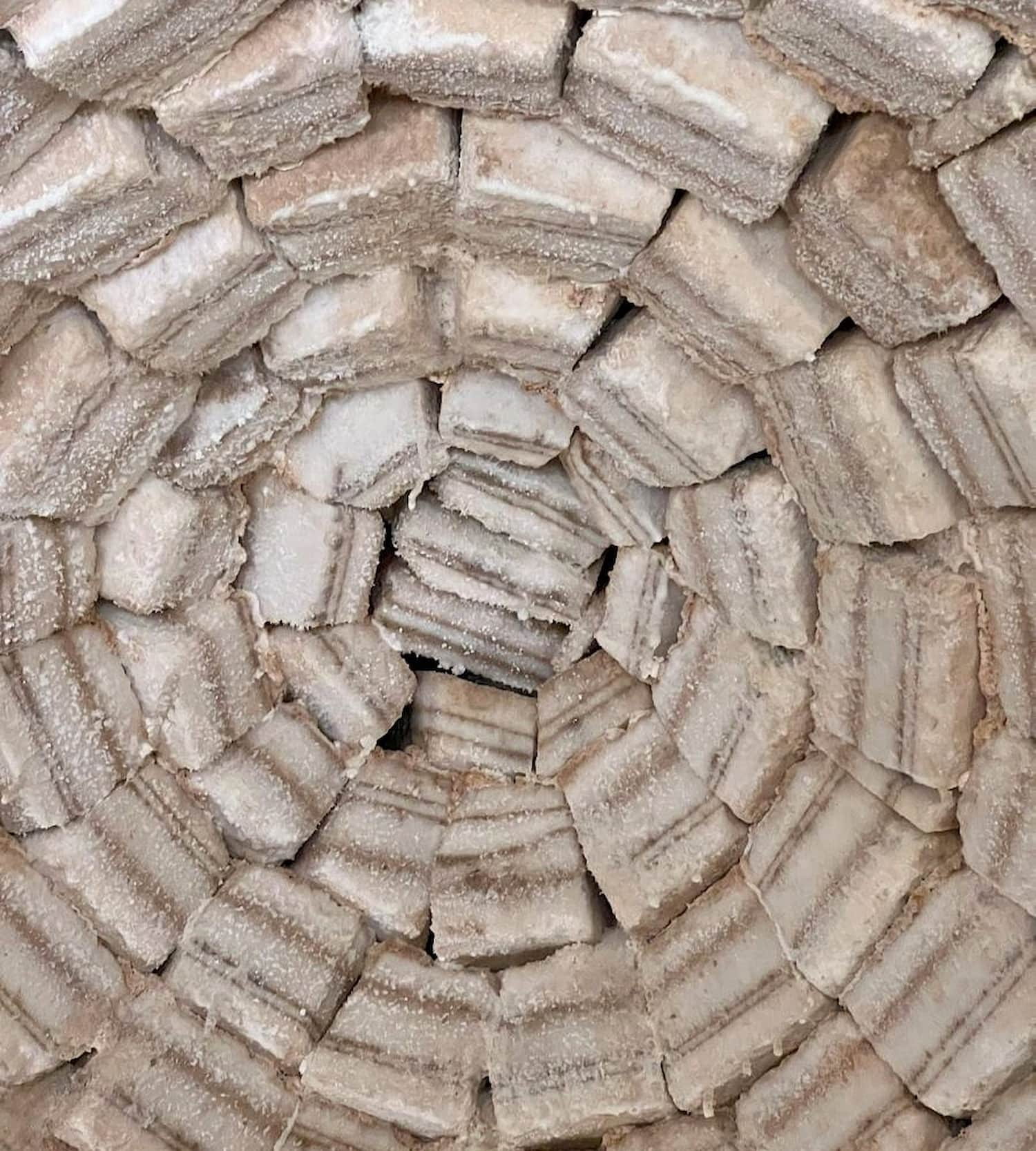
Our hotel bedroom ceiling. Mesmerizing!
We stayed at Palacio de Sal, a long-time favourite of Viva’s, though I also popped into Luna Salada, which instantly became mine. Both are charming properties, comfortable without being over the top. They have hot showers, a heated pool for relaxing at the end of the day, and Luna Salada even has a dining room that looks out across the Salar. The real highlight, though, is sleeping in a room made of salt.
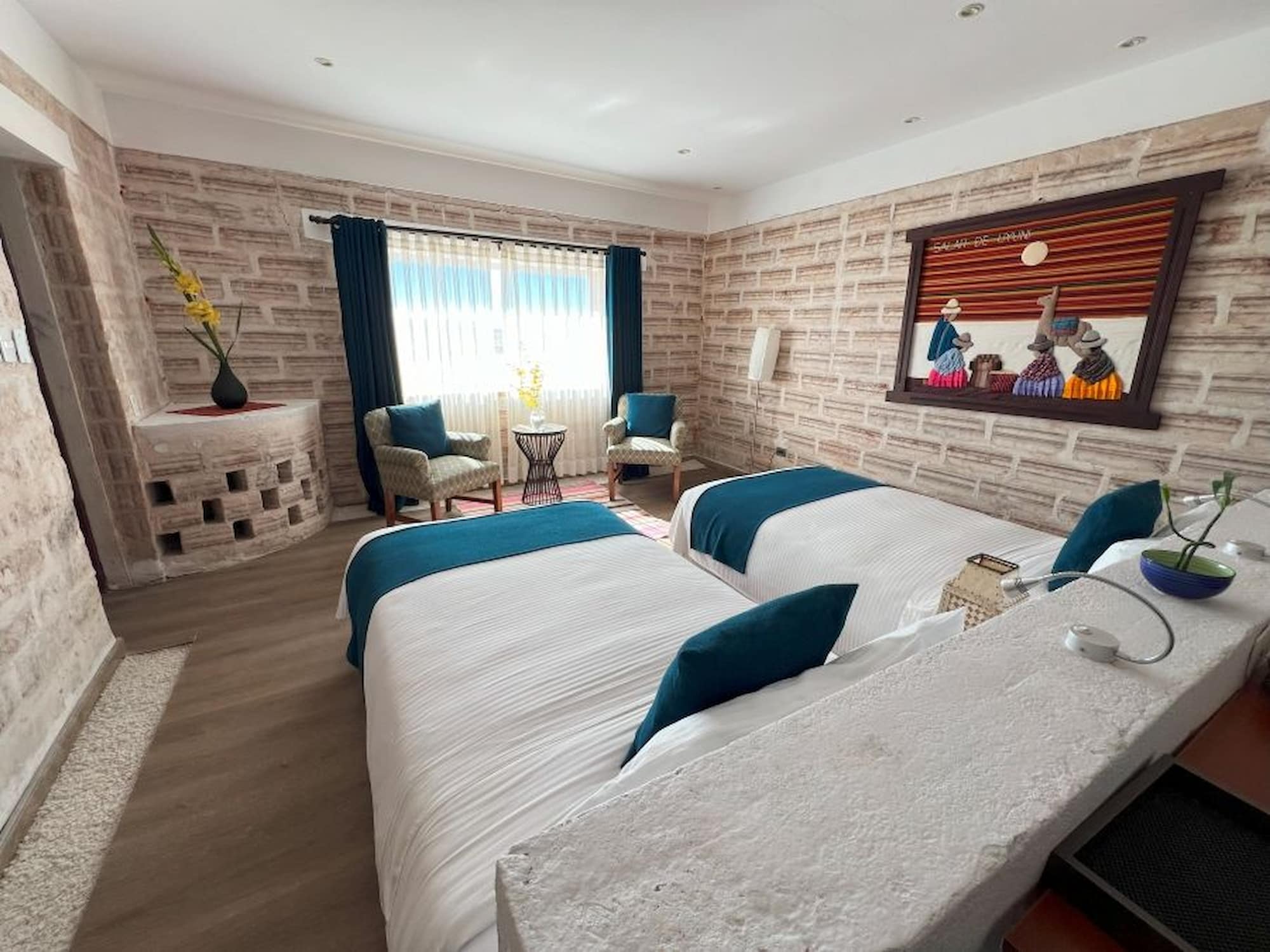
Our Luna Salada bedroom.
Further out in the Altiplano, accommodation gets simpler because the region is so remote. The lodges are small, warm and welcoming, with dinner and breakfast served onsite and a delicious picnic prepared for lunch each day. There's a genuine sense of care in how guests are looked after here, and it's wonderful to remember that luxurious comforts don't need to come with fancy extras.
How to Get There
Before reaching Uyuni, we had spent time trekking in the Bolivian Andes after flying into La Paz, which, at over 3,600 metres, is not the easiest place to start if you're still adjusting to altitude. Most travellers will find it more comfortable to begin in Chile’s Atacama Desert, where the elevation is lower, and then cross the border into Bolivia. That route, which is part of Viva’s Signature Salt Flats and Atacama Tour, links two of South America’s most spectacular landscapes and can be travelled in either direction.
When we set out towards Uyuni by road, an unexpected snowstorm had closed the main Hito Cajón border for a week, forcing many to change their plans. This was the border crossing we had planned to use to cross into Chile after our time in the Altiplano. Thanks to Viva's 24-hour support team and our local guide's constant updates, we were rerouted north to cross at Ollagüe, and Plan B went off without a hitch. Experiences like that show the benefit of travelling with an expert team that knows how to handle the unexpected.
Once you’re in the region, distances can be deceiving. What looks close on a map might take hours on unpaved roads, and the weather can change in minutes. A private four-wheel drive with an experienced guide isn’t a luxury, it’s downright essential. Viva’s team and local partners manage every detail seamlessly so you can simply enjoy the adventure.
About the Guides & Our Itinerary
Oscar, our Bolivia travel guide, was sensational. He pointed out volcanoes on the horizon, spotted wildlife long before we ever did, and filled the long drives with stories about the region's people, geology, and history, as well as the community projects that responsible tourism helps to fund. It means you can visit and help protect this exquisite yet fragile environment.
The Land Cruiser handled the rough tracks with ease, as did our experienced driver. Conditions are not the easiest, up here, but we always felt safe and comfortable, which is the true, priceless luxury.
Bolivia is wild and unpredictable, but that's what makes it unforgettable. If you're planning a trip, bring warm clothes, sunglasses and sunscreen (don't forget the lip balm!), patience for the altitude, but also a sense of adventure (for the unexpected curve balls) and plenty of curiosity. Pack all these, and you are bound to have the trip of a lifetime. Just like we did.
Thinking about your own adventure? Contact our Destination Specialists today, and they'll help you create the Bolivia trip you've always dreamed about.
Tara Sutherland
Tara Sutherland is Viva Expeditions' General Manager and lifelong adventure travel enthusiast. She has visited Antarctica multiple times, including a bucket-list moment retracing Shackleton's steps on South Georgia. She's also made it all the way to the geographic North Pole - a feat very few have achieved! These days, she's more often behind the scenes, but brings years of first-hand experience to leading the Viva team and still gets excited about new places, hidden gems, and what makes travel truly unforgettable.
|
